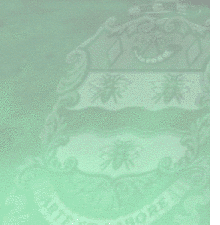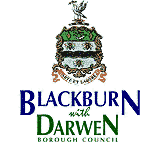






Key Stage 1 Communities and IdentityYear 1 And 2 My Money
Return to Key Stage 1 Framework
Lesson Plan
Teaching Objectives Possible Teaching Activity Learning Outcomes Children should learn:
that they make choices about the different things they would like to buy
what money is and where it comes from
the importance of budgeting their money
that they need to keep their money safe and that there are different ways in which they can save their money
�
- Children will learn the importance of having money to be able to buy the things they need and want
- Children will learn where money comes from and be able to identify different notes and coins
- Children will also understand the importance of budgeting and thinking how they are going to spend their money. They will also learn that they can save their money in various ways.
NB - This framework links to the Personal Finance Education Group Framework which has been written in conjunction with the DfES guidance on Financial Capability through Personal Financial Education.
Teachers Notes
Background Notes
Most children would like to own something that they don't already have.
There could also be a variety of different reasons that they would like to own that particular item. It is important for children to understand what influences their choices so they can make decisions and try to start thinking about why they would like to own a particular item.
Advertising - They may have been made to believe that they will only be accepted amongst their friends if they are wearing a particular brand label or playing with a particular article. Also, they may see a toy advertised on television that looks like a lot of fun. They may however find that once they have actually been bought that toy that it is not as good as it appeared on the television.
Friends - They may choose to own or collect something just because all their friends are wearing/playing with similar things and they don't want to appear odd or to feel left out.
Fashion - They may choose to wear certain clothes because their favourite pop star wears similar clothes.
Suggested Teaching Activity
Classroom Discussion
Start the lesson by talking asking the children about what types of things they would like to own. Ask them why they want to own different things - is it because their friends have one or they have seen an advert on the television, etc?
Classroom Puzzles
Making Sense of Money is a puzzle book packed with games and activities on monetary themes aimed at children aged 4-8 (www.pfeg.org/Resources/Detail/default.asp?ResourceID=38). Further details about this and other packs are available on the Personal Finance Education Group website (www.pfeg.org/)
Case Studies
The Tesco Project
A case study on the Personal Finance Education Group website (www.pfeg.org/Resources/Detail/default.asp?ResourceID=76) that describes how through experiencing real life shopping, pupils would acquire a number of personal finance skills. Literacy skills were also covered when the children looked at the impact of advertising on their purchasing decisions.
Evaluating Products
Media Smart (www.mediasmart.org.uk/teachers/index.html) is designed to help children to understand advertising. It contains interactive fun resources for children (www.mediasmart.org.uk/kids/index.html)
�
Background Notes
It is important for children to understand that, in order to be able to buy the things that they would like to own, it is necessary to have money.
Children need to realise that unless we have money we are not able to buy the things that we would like. Money comes from a range of different sources - they may get pocket money or money for their birthdays. Adults will usually get the money that they have from going to work.
Pupils need to try and develop a sense of understanding of their own needs and others' within their family. They need to understand that money must to be spent on the things that we need to live - food, house, clothes and shoes.
It is only then, if there is money left, that we are able to buy the things that we would like.
Children need to try and learn about the values of different coins and notes and understand that just because they have a big pile of pennies it does not necessarily mean that they have lots of money.
Children need to be able to distinguish between the different coins that are available - 1p, 2p, 5p, 10p, 20p, 50p, �1 coin and �2 as well as the different notes - �5, �10, �20 and �50.
Suggested Teaching Activity
Classroom Discussion
Talk to the children about money and explain that you need money to buy most things. Look at the different types of coins and notes that we use and ask the children where they think money comes from.
Classroom Activity
Mega Money (www.pfeg.org/Resources/Detail/default.asp?ResourceID=189) is a set of 40 large demonstration coins (five of each denomination) available from the Personal Finance Education Group pfeg (www.pfeg.org/pfeg.asp) to help develop children's coin recognition and understanding of money. The coins are printed both sides on laminated cards and are supplied with teachers' notes offering activities for children in the 5-11 age range.
Case Studies
The Lighthouse Keeper 1 (www.pfeg.org/Resources/Detail/default.asp?CssSizeID=1&ResourceID=79)
The Lighthouse Keeper 2 (www.pfeg.org/Resources/Detail/default.asp?CssSizeID=1&ResourceID=65)
These case studies on the Personal Finance Education Group's website use a series of lessons about the story of a lighthouse keeper to explore work and pay with the children.
Maths Counts (www.pfeg.org/Resources/Detail/default.asp?ResourceID=52)
This case study on the Personal Finance Education Group website contains 10 games centred around supermarket shopping. 2 games cover KS1 numeracy and the KS2 games can be adapted to address the themes of financial capability by introducing additional elements to the 'shopping' based games.
The Penny Drops (www.pfeg.org/Resources/Detail/default.asp?CssSizeID=1&ResourceID=83)
This case study on the Personal Finance Education Group website demonstrates how one teacher tackled children's need to understand the concept of money and coins & notes.
�
Background Notes
Most children have some money - whether it is pocket money or money that they get for birthdays or Christmas. They may already be allowed to make decisions about how they spend some of this money, for example they can choose if they spend it on comics, sweets, stickers, game cards, etc.
Suggested Teaching Activity
Drawing Activity
Ask the children to draw a picture of the different things they like to spend their pocket money on.
Classroom Activity
Money Counts (www.pfeg.org/Resources/Detail/default.asp?ResourceID=29) has been developed by the Financial Services Authority. It provides teachers with the tools they will need to develop children's financial capability within the context of mathematics. The pack is aimed at the 5-11 age range and offers activities (for each age group) that are suitable for the main part of a daily numeracy or mathematics lesson as well as three extended projects that develop real-life contexts for money.
Case Studies
The Lollipop Project (www.pfeg.org/Resources/Detail/default.asp?ResourceID=54) is a case study on the Personal Finance Education Group website which shows how, through a Design and Technology project, children can be encouraged to develop an understanding of the concept of value for money.
The Toy Shop (www.pfeg.org/Resources/Detail/default.asp?ResourceID=84) is a case study on the Personal Finance Education Group website which shows how teachers have worked with children to help them understand money, coinage and different values by stimulating a shopping activity.
Role Play in Reception (www.pfeg.org/Resources/Detail/default.asp?ResourceID=82) is a case study on the Personal Finance Education Group website that demonstrates how, through role play, children achieve a greater understanding of money and money transactions, whilst developing their literacy skills.
�
Background Notes
By teaching children from a young age to understand and learn about money we are encouraging them to become financially capable. This means that even from a young age, they can start to make sensible choices in relation to managing the money they have. This helps children to become independent and make informed decisions about keeping money safe, budgeting, spending, saving, sharing, borrowing and obtaining value for money.
There are a variety of ways in which children can keep their money safe nowadays. Most of them will have piggy banks that they use to keep their pennies in. Some of the children may have already had bank, building society or post office accounts set up on their behalf.
Some of these accounts will be for the children to save up for something expensive that they would like to buy, like a computer game or a football shirt. However, some of these accounts will have been set up so that money can be saved for the child's future, eg - deposit towards a car, money for University, etc.
The main importance for teaching students about savings is to show them that they can actually save up for the items that they would like to own. By putting some of their money away each week/month, they can see the money they have grow and can eventually buy the things they would like to own.
Suggested Teaching Activity
Case Study
Personal Finance Education through literacy (www.pfeg.org/Resources/Detail/default.asp?ResourceID=81). This case study on the Personal Finance Education Group website uses a story to help children manage money and deal with risk and return.
![]()
Blackburn with Darwen Borough Council, Trading Standards Service, 3-5
Salford, Blackburn, Lancashire BB1 6HG
Telephone:
(Consumer Advice) 08454 040506 (Trader Advice) (01254) 222502
Fax: (01254) 698312
Internet World Wide Web
http://www.tradingstandards.gov.uk
Electronic
Mail:
[email protected]
Copyright � Blackburn with Darwen 2007





